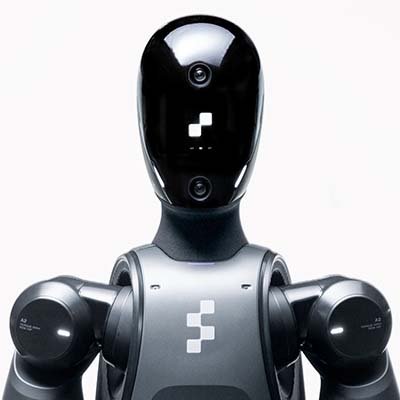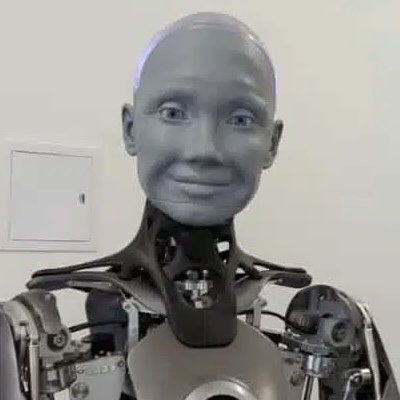26 January 2025

Have you noticed how humanoid robots are starting to look like they’ve stepped off the pages of a slick sci-fi graphic novel? The new wave of mechanical beings – think Tesla’s Optimus, Figure 01, and others – sport glossy, obsidian face-plates that reflect studio lights with a futuristic sheen. We’ve arrived at a moment where reality is colliding with the designs once confined to science fiction concept art. But what exactly does this aesthetic say about us – and about the technologies lurking behind these sleek exteriors?
Marshall McLuhan, the visionary media theorist, famously distinguished between ‘hot’ and ‘cool’ media. Hot media, like film, saturate the senses with information, leaving the viewer with minimal interpretative work. Cool media, by contrast, are low-definition and require active interpretation or participation. For today’s humanoid robots, their reflective, featureless faces lean toward the ‘cool’ side, not just in their glossy-chrome minimalism, but in how they invite us – almost challenge us – to project our own impressions, moods, and emotions onto them. Without expressive features, we end up filling in the blanks, reading presence or sentience into a silent, black screen.
Robots like Ameca stand in stark contrast. She’s undeniably ‘hotter’—her face is highly articulated, revealing micro-expressions that attempt to mimic the subtleties of human affect. She leaves less interpretative space, presenting us with a nearly cinematic performance of ‘being’. Where Ameca’s wide-eyed surprise or half-smile might be mesmerizing or uncanny, Tesla Optimus’s glossy mask says, ‘I am whatever you believe me to be’. The latter’s coolness is precisely its trick: it lures us into making the robot more than it is.
Aesthetics aside, we have to ask just how advanced these humanoid robots truly are. Those black mirrored faces whisper of advanced AI sophistication. But behind the marketing blitz are often partial prototypes, sometimes performing choreographed demonstrations that rely on humans to keep them upright, fed with curated input, and running in optimal conditions. The illusions are strong because we want to believe. We’re drawn to anthropomorphising a blank slate – any slight nod of the head can become a sign of profound intelligence in our eyes.

In the race to perfect human-like machines, the lines are blurred: marketing hype and utopianism merge seamlessly with incremental engineering progress. Splashy keynotes tout these glossy androids as ‘the future of work’—a future where mechanical assistants wander calmly among us, picking groceries, delivering mail, and maybe cracking a mild joke now and then. But there’s a gap between that vision and reality. Most of these demos are a tantalising display of artifice; the public sees a lithe figure or a stoic visage with hidden potential. Meanwhile, practical robotics often resides in the industrial or specialised domain, where simple arms perform repetitive tasks without the need for a face at all.
Yet we persist in investing these silent surfaces with near-mythic significance. We name them, we attribute them personalities, and we dream of synergy between flesh and circuit. It’s a testament to how deeply humans crave intelligent companionship – one that is tireless, unwavering, and forever lacking the fragility of our all-too-human hearts.
So, as the shiny, black-faced android armies multiply in press releases, remember: they’re as much reflections of our hopes and beliefs as they are technological milestones. Much of the hype depends on the blank space that a ‘cool’ aesthetic leaves for our imaginations to occupy. Yes, the glistening face may promise everything – and maybe one day it’ll deliver. But for now, it’s good to temper our excitement with a healthy dose of skepticism. After all, the real challenge isn’t how shiny the façade is, but whether the underlying tech can live up to our wildest projections.

Leave a Reply